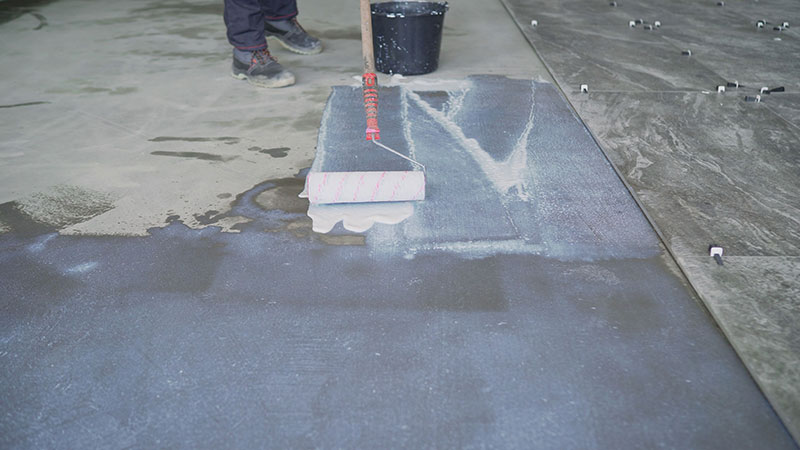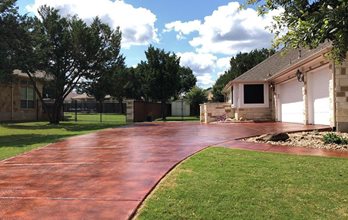Seal the Handle Brentwood Concrete Sealing Specialists
Wiki Article
Unlocking the Keys of Effective Concrete Sealing: A Step-by-Step Process for Lasting Security
Are you tired of your concrete surface areas degrading and losing their allure? You will learn how to evaluate the problem of your concrete, prepare the surface area, select the right sealant, use it properly, and keep your concrete for resilient results.Assessing the Condition of Your Concrete
Prior to you begin the procedure of sealing your concrete, you require to assess its present condition. This action is critical to make sure that the sealing process is reliable and lasting. Begin by taking a look at the surface area of the concrete for any noticeable damages such as cracks, chips, or spalling. These problems require to be addressed prior to sealing to avoid additional damage. Bear in mind of any oil stains, grease marks, or various other impurities that might exist externally. These must be extensively cleaned and eliminated prior to securing to guarantee appropriate attachment.Following, consider the age of the concrete. Older concrete may have much more tear and put on, making it more at risk to damage and looking for additional preparation. Additionally, inspect the wetness levels of the concrete. If the concrete is as well damp for sealing, make use of a dampness meter to determine. It is important to allow the concrete to completely dry completely before continuing with the securing procedure. if the dampness levels are too high.

Preparing the Surface Area for Securing
To properly prepare the surface area for securing, start by extensively cleaning and eliminating any type of impurities existing on the concrete. This action is essential to make sure correct adhesion of the sealer and maximize its effectiveness.After cleaning, it is essential to remove any kind of existing sealants or finishes that may be present on the concrete. This can be done using a chemical pole dancer especially created for concrete surfaces (Concrete Sealing Brentwood).
As soon as the surface area is tidy and free from pollutants, it is essential to permit it to completely dry entirely prior to using the sealant. Dampness can conflict with the sealant's capability to bond effectively and might result in premature failure. Depending on the weather problems and the porosity of the concrete, drying out time can differ. It is suggested to wait a minimum of 24-48 hours before applying the sealer.
Picking the Right Sealer for Your Concrete
When selecting the suitable sealant,You must think about the certain requirements of your concrete. Not all sealants are developed equal, and various kinds of concrete require various kinds of sealants to make certain effective defense. The initial thing you should establish is the sort of concrete you have. Is it a newly put concrete or an existing one? If it's brand-new, you'll need a healing and sealing compound to protect against moisture loss and promote correct treating. For existing concrete, you'll need to analyze its condition. Is it healthy, or does it have splits or other damages? You'll need a split sealer to load and repair them prior to applying a general-purpose sealant if there are cracks. Furthermore, you should take into consideration the level of defense you need. Are you seeking a sealer that improves the appearance of your concrete or one that offers optimum defense against spots and damages? There are sealants available for both aesthetic enhancement and sturdy defense. Consider the application technique and toughness. Do you prefer a sealant that can be sprayed or one that requires brush or roller application? How long do you want the sealer to last? Some sealers need to be reapplied annually, while others can last as much as five years or even more. By taking into consideration these variables, you can select the appropriate sealer for your concrete and make certain long-lasting security.Applying the Sealer to Your Concrete
To start using the sealer to your concrete, make sure you have gathered all the necessary materials and devices. You will certainly need a high-grade concrete sealant, a paint roller or sprayer, a paint tray, a paintbrush, a broom or brush for cleaning the surface, and safety equipment such as handwear covers and goggles. When you have whatever ready, follow these actions for a successful application - Mccoys Concrete Sealing.First, prepare the concrete surface area by cleaning it thoroughly. Brush up away any type of dirt, debris, or dirt and utilize a brush to remove persistent discolorations or deposit. It is necessary to have a clean and dry surface before using the sealer.
Following, pour the sealant into the paint tray and dip your roller or sprayer into it. Beginning using the sealer uniformly throughout the concrete surface, functioning in little sections. Make use of a brush to reach edges and edges that the roller or sprayer may miss out on.
Make certain to use the sealer in slim layers to prevent puddling or irregular protection. If using a sprayer, keep it at a regular distance from the surface area to make certain an even application.
Enable the sealant to completely dry completely prior to applying extra layers. This usually takes regarding 1 day, but refer to the maker's guidelines for particular drying times.
As soon as the sealer is dry, examine the surface area for any kind of missed spots or areas that require touch-ups. Apply added layers if required, adhering to the very same process as before.
Keep in mind to throw away any kind of leftover sealer and clean your tools correctly after usage. Proper application and maintenance of the sealer will guarantee resilient defense for your concrete.
Keeping and Re-Sealing Your Concrete
Proper maintenance and re-sealing are vital for maintaining the longevity of your concrete. Routine maintenance helps to stop damage and damage, while re-sealing ensures that your concrete remains protected and looking its best. Here is a detailed guide to maintaining and re-sealing your concrete.First, it is necessary to regularly clean your concrete. Sweep away any type of debris or dirt, and use a mild detergent and water to remove spills or discolorations. Stay clear of making use of extreme chemicals that can harm the sealer.
Next, examine your concrete for any cracks or damage. Quickly repair any splits making use of an ideal concrete repair service product. This will prevent water from seeping right into the cracks and causing more damages.

After using the sealer, permit it to completely dry completely prior to allowing foot or vehicle web traffic. This may take numerous hours or even days, depending on the kind of sealer used.

Final Thought
In verdict, securing your concrete is a crucial step in securing it from damages and guaranteeing its long life. By assessing the condition of your concrete, preparing the surface, picking the appropriate sealer, and using it properly, you can accomplish lasting defense.You will find out exactly how to analyze the problem of your concrete, prepare the surface area, pick the right sealer, apply it properly, and preserve your concrete for resilient outcomes. Not all sealers are produced equal, and different types of concrete require various types of sealants to ensure effective protection. Beginning using the sealant uniformly throughout the concrete surface, working in small sections. Pick a top notch concrete sealant that is suitable with your existing sealer. By assessing the problem of Brentwood Concrete Sealing your concrete, preparing the surface, selecting the ideal sealer, and applying it appropriately, you can attain resilient defense.
Report this wiki page